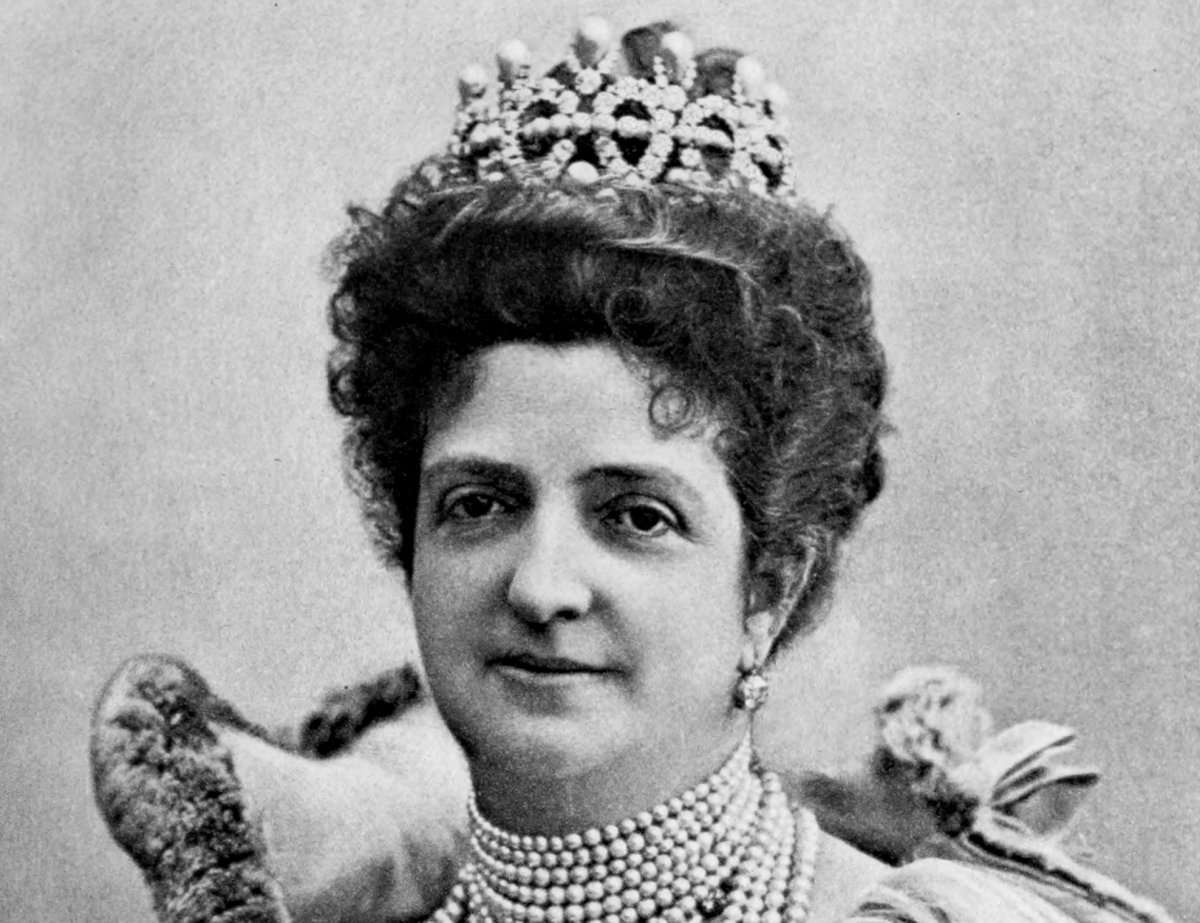
Over the last few weeks, the descendants of Italy’s last king have renewed their efforts to reclaim a collection of hidden royal jewels. The jewelry, which has been locked away in an Italian bank since 1946, belonged to the last royal rulers of the country. Today, we’re talking about the reclamation efforts, and discussing the jewels that are at stake.
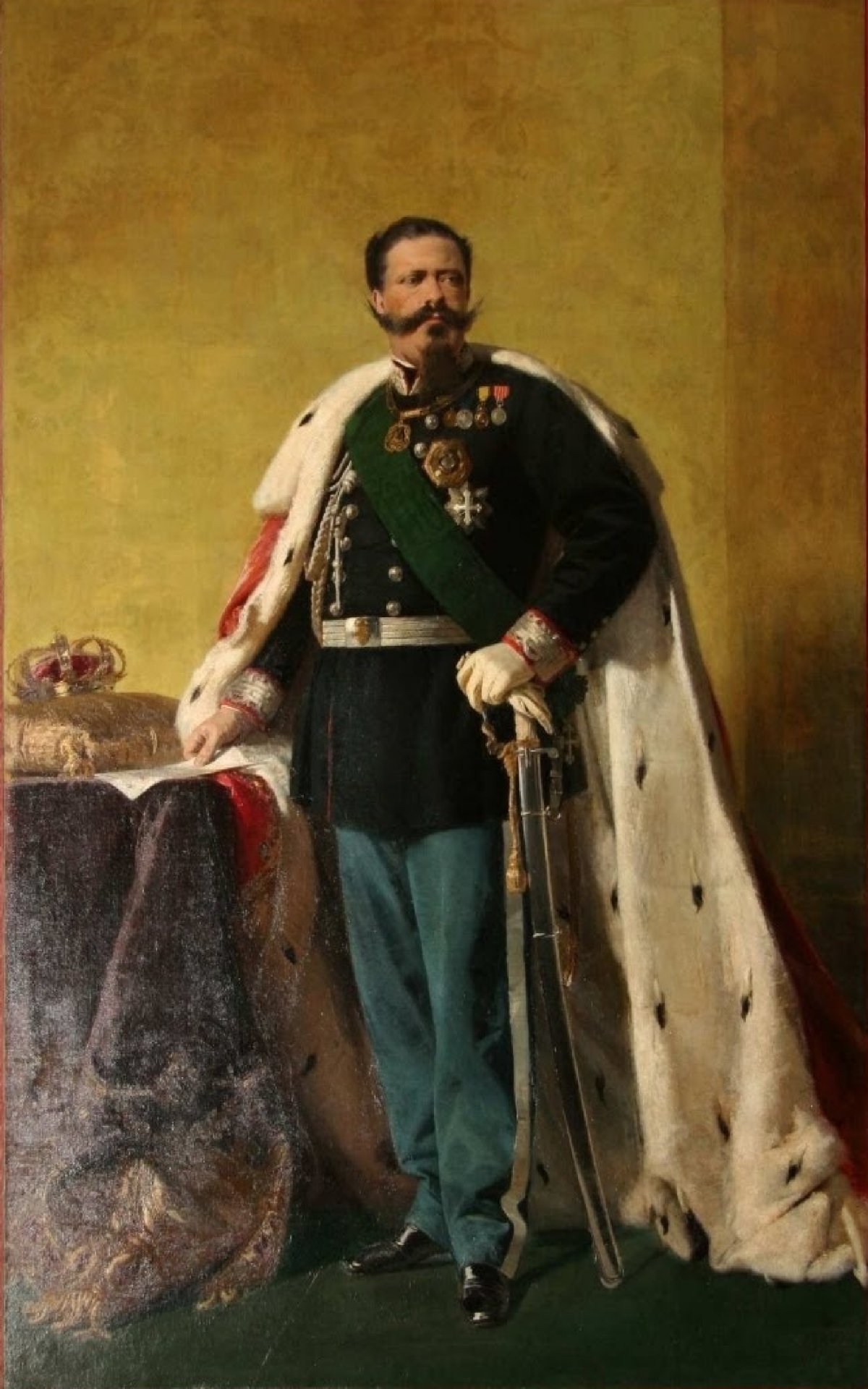
Though there have been kings in Italy for centuries, there were only Kings of Italy for about eight decades. The nation was unified under one crown in 1861, with King Vittorio Emanuele II (pictured above) as its monarch. The monarchy essentially lasted for three generations. Vittorio Emanuele II was followed by his son, Umberto I, and his grandson, Vittorio Emanuele III. The last Italian monarch was King Umberto II, who reigned for just a month after his father’s abdication in 1946.
King Vittorio Emanuele II’s wife, Archduchess Adelaide of Austria, died before Italian unification. He would later take a morganatic wife, Rosa Vercellana, but she was never recognized as queen. Therefore, the first Queen of Italy was Princess Margherita of Savoy, the wife of his son, King Umberto II.
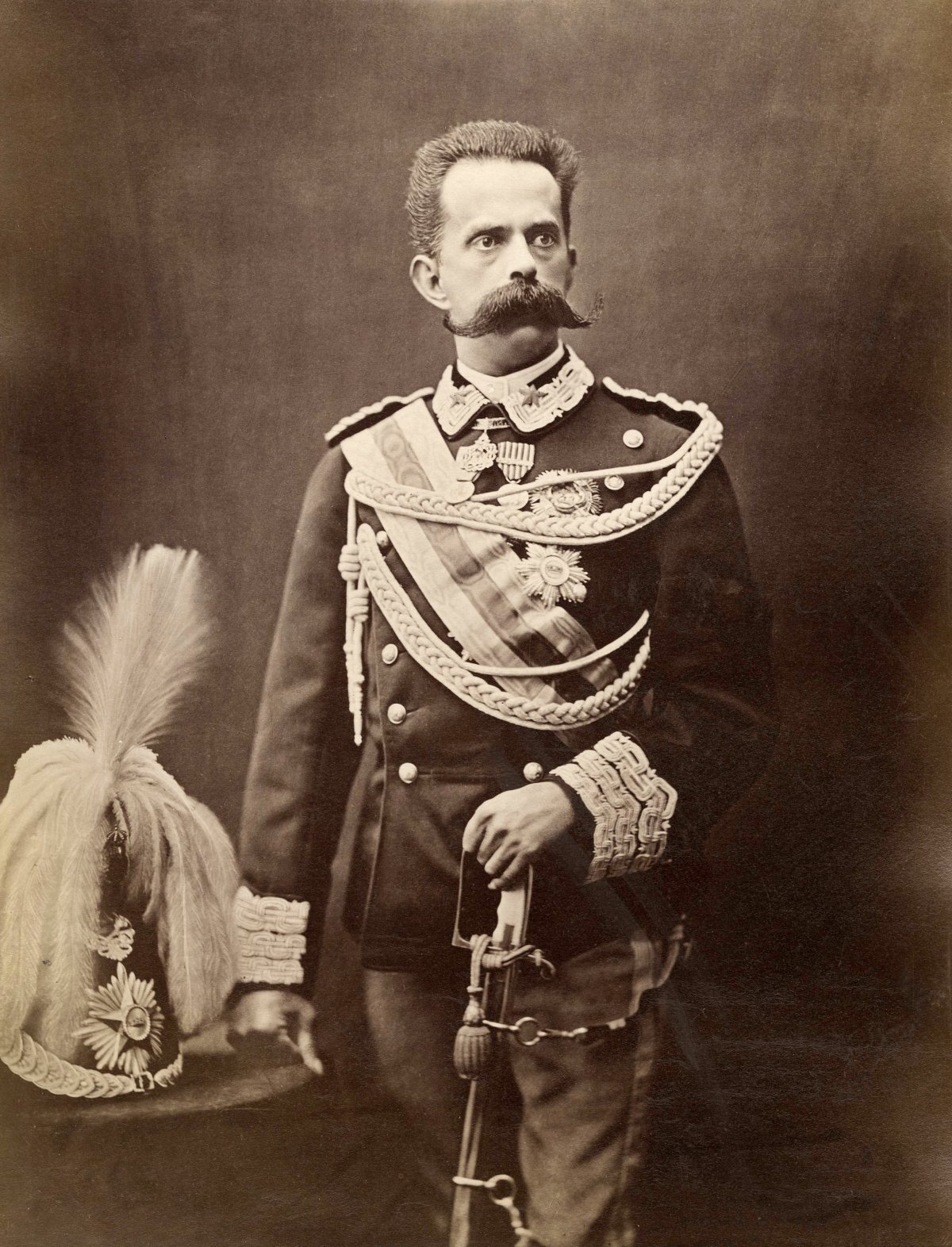
When King Umberto I (pictured above) and Queen Margherita ascended to the throne in 1878, they realized that, as there had not been a previous Italian queen consort, there were no specific Italian royal jewels designated just for the nation’s queen consort to wear. During Umberto’s reign, they put together a collection of jewels that they intended to be used by all subsequent Queens of Italy for generations to come. These were different from personal jewels: they were apparently intended to be more like Britain’s heirlooms of the crown, or Spain’s joyas de pasar. The monarch and consort were custodians of the jewels, using them until they were passed on to the next generation.
Let’s look at some of the royal jewels from this collection, pieces which were worn first by Queen Margherita of Italy and then by her successor, Queen Elena.
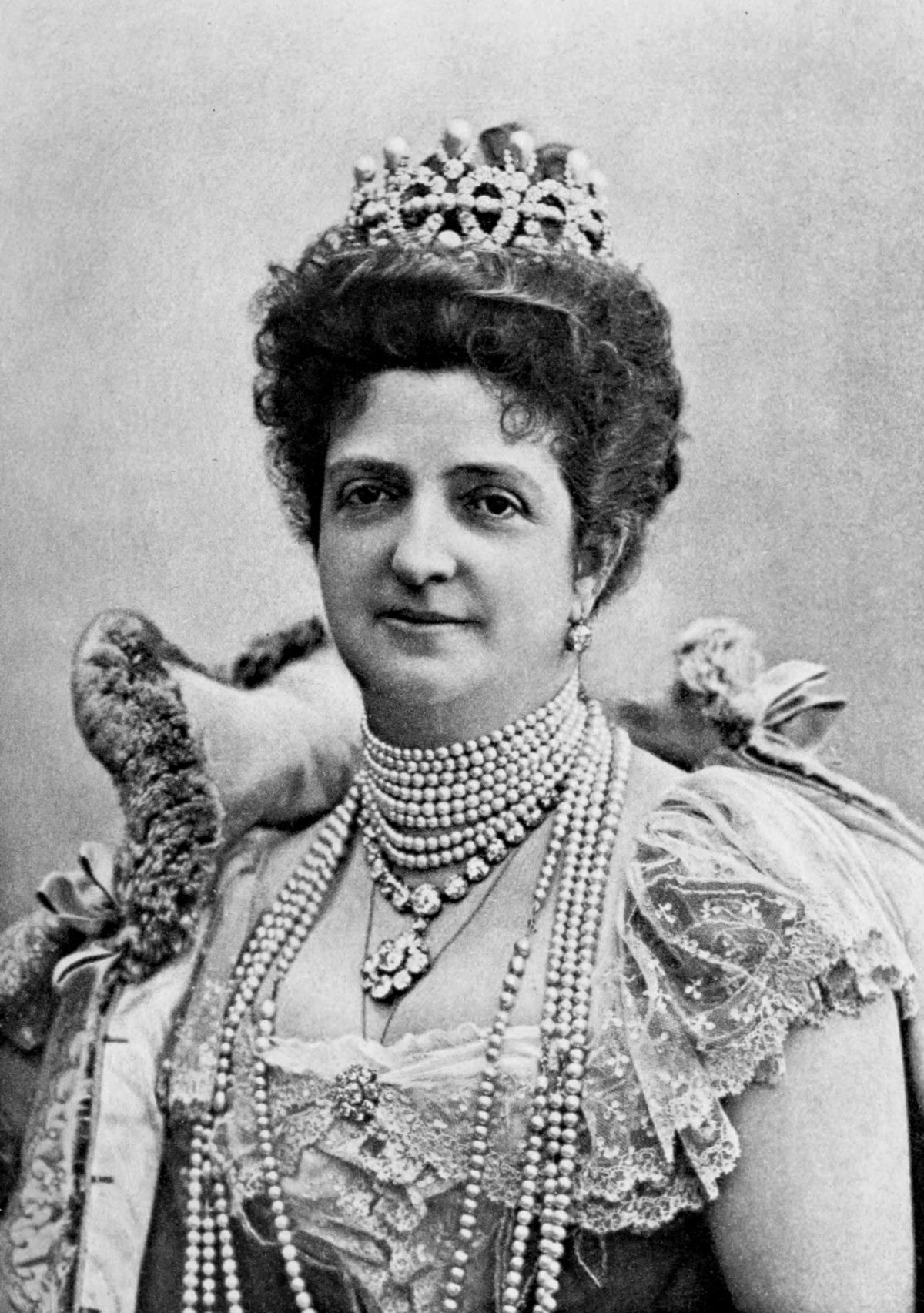
Probably the most recognizable jewel from the collection is Queen Margherita’s Savoy Knot Tiara, made of diamonds and pearls and featuring the heraldic Savoy knot motif in its design. Here, Queen Margherita wears the tiara in a photographic portrait, along with additional diamonds and her famous pearls (which were not part of the collection).
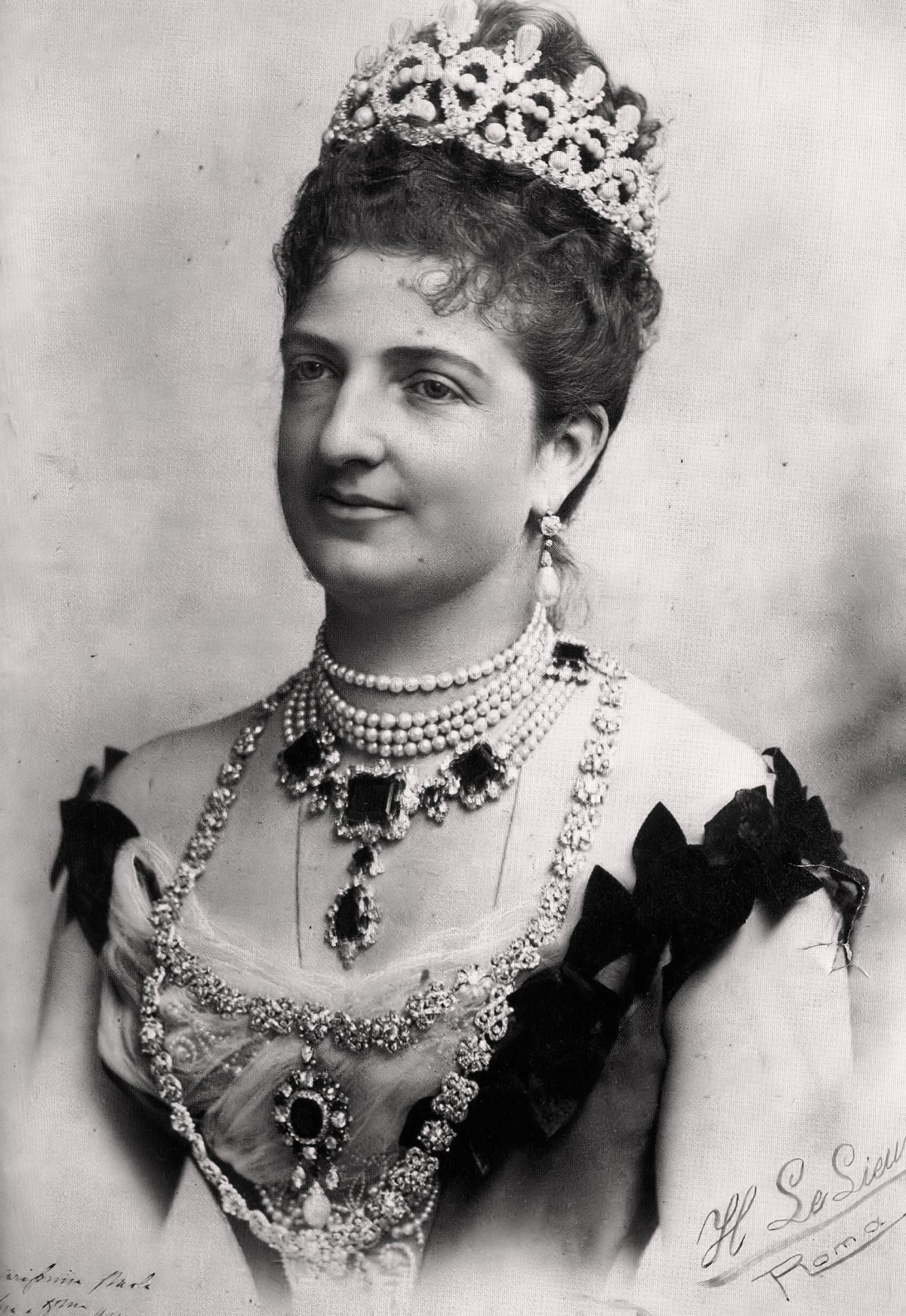
In this portrait, Queen Margherita wears the tiara with another jewel from the collection: the complicated diamond sautoir, which also features Savoy knots in its design. In the photographic inventory of the collection, the sautoir also has a jeweled tassel. Queen Margherita also wears her emerald necklace here, which was not part of the group of jewels.
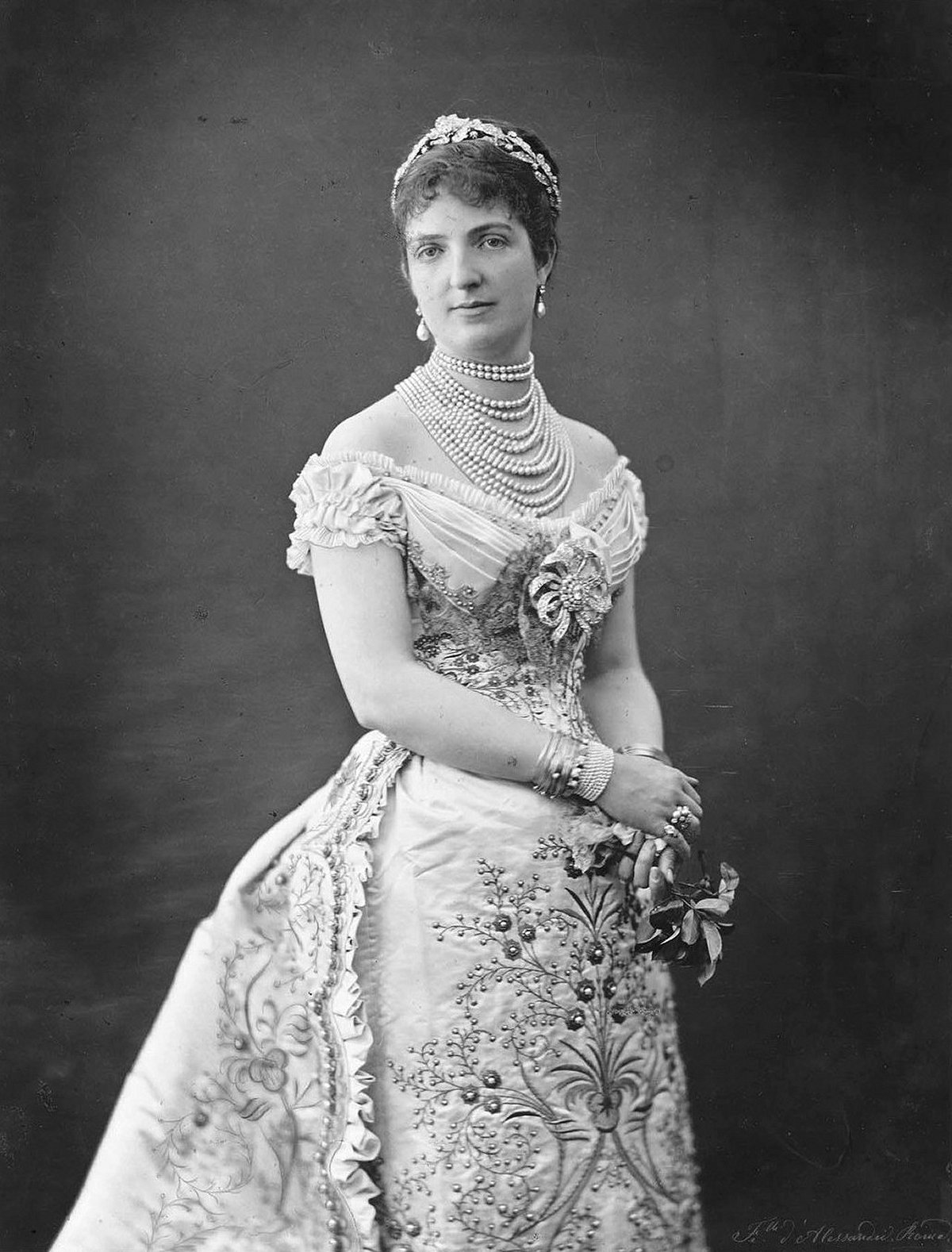
Probably one of the most valuable pieces in the collection is this diamond corsage ornament with its looping ribbon design. The gemstone set in the central cluster is a pink diamond. (This tiara, made for Margherita by Mellerio, is now part of the Albion Art Collection.)
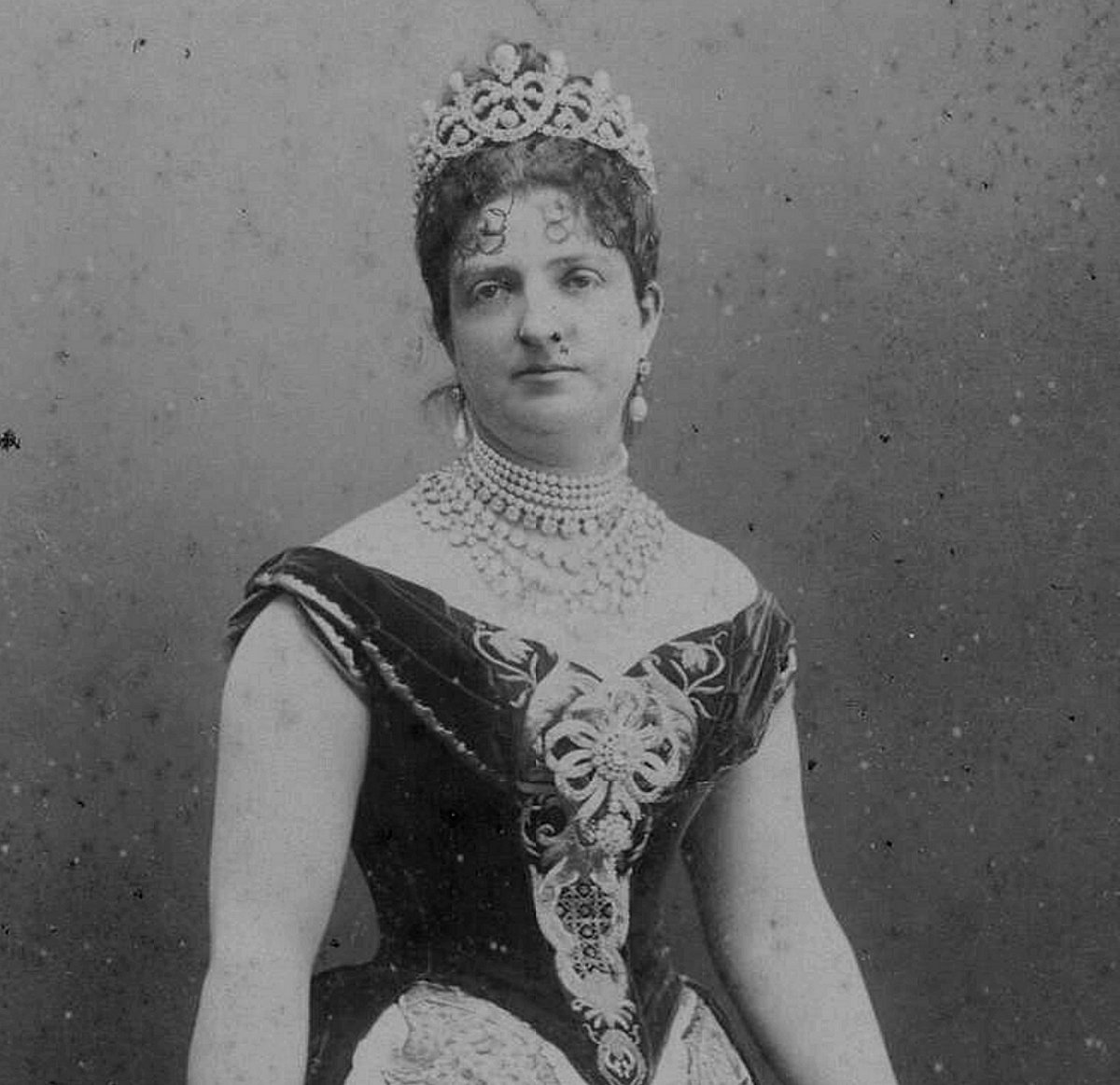
The corsage ornament was also often worn with an additional diamond cluster and drop pendant. Queen Margherita wears it in this form in this photographic portrait.
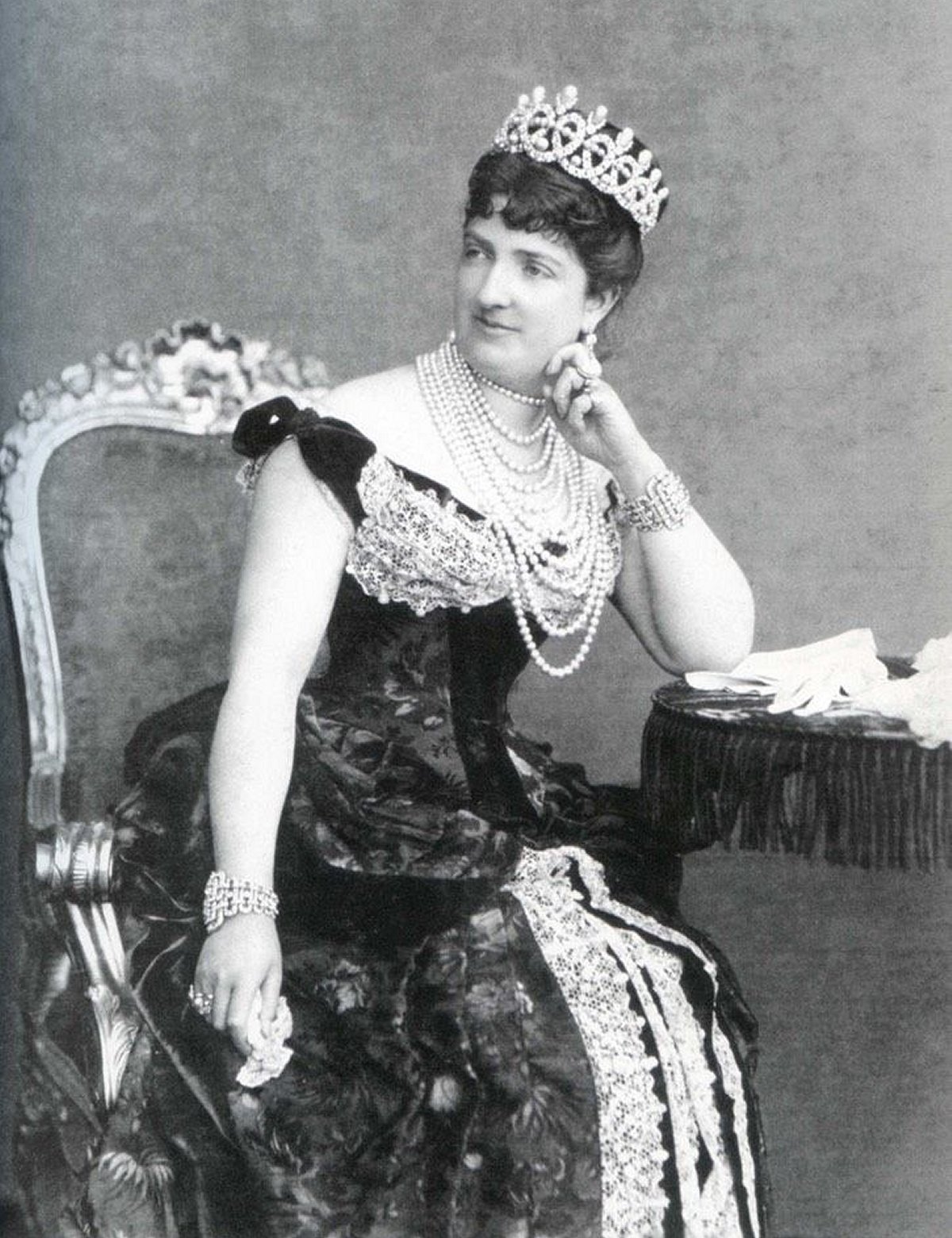
Two striking diamond bracelets with a chain-link design are also part of the collection. (They remind me a lot of Queen Mary’s Chain-Link Bracelets.) Here, Queen Margherita wears them with her Savoy Knot Tiara (which was part of the collection) and her famous pearls (which were not).

Here’s Queen Elena of Italy, Queen Margherita’s daughter-in-law, wearing several pieces from the collection. Along with the Savoy Knot Tiara and the diamond corsage ornament, she’s wearing the grand diamond festoon necklace from the grouping of jewels. She also wears a long sautoir of diamonds, which I don’t believe is part of the collection.

Here’s Queen Margherita wearing the same festoon necklace, but supplemented with an additional diamond rivière. This second diamond necklace is, I believe, the one also included in the collection.
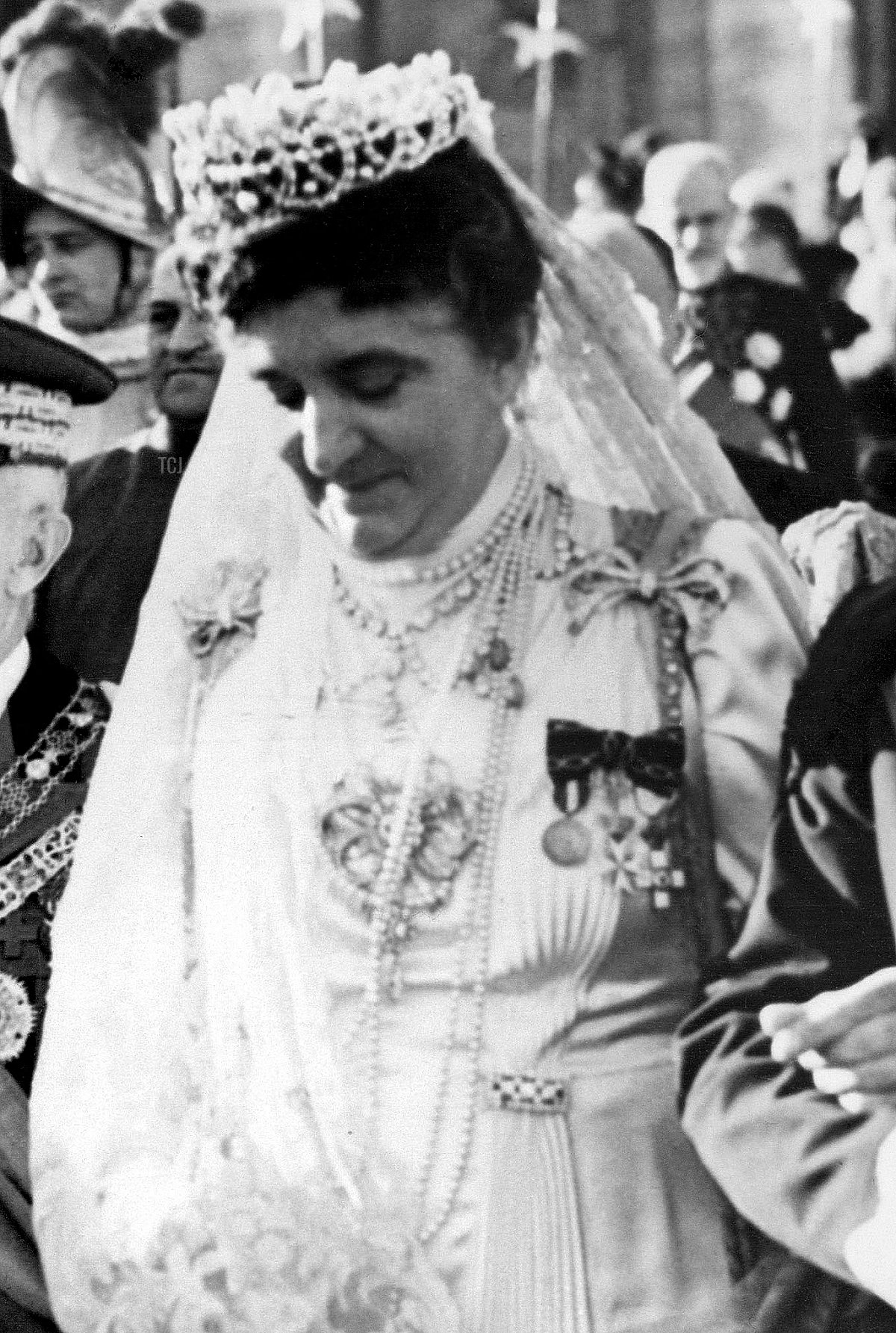
The collection also includes five more diamond bow brooches. Here, during a visit to the Vatican in December 1939, Queen Elena wears two of them at her shoulders. She’s also wearing the Savoy Knot Tiara, the diamond festoon necklace, and the diamond corsage ornament with its additional cluster and drop pendant.
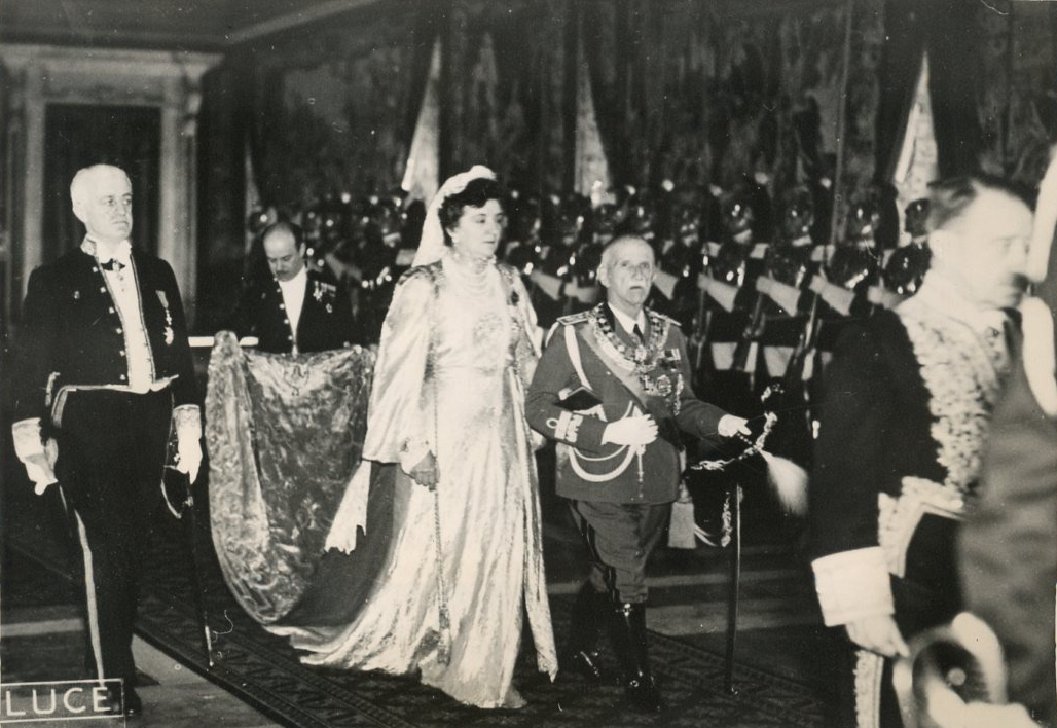
When King Umberto I of Italy died in 1900, he was succeeded by his only child, King Vittorio Emanuele III. The new king’s wife was Princess Elena of Montenegro, whom he had married less than four years earlier. She would wear the queen consort’s jewels for the next 46 years. They’re pictured together above in 1937 in the chapel of the Quirinal Palace in Rome.
King Vittorio Emanuele and Queen Elena’s reign spanned a whole lot of upheaval, including both World Wars. After World War II, however, the Italian royals suddenly found themselves on a very shaky throne. The king, conscious that his associations with Mussolini’s regime had irreparably damaged his reputation, had transferred much of his power to his son, Crown Prince Umberto, in 1944. But it wasn’t enough. In 1946, a referendum was planned to decide whether Italy should remain a monarchy or become a republic. Hoping to help shore up support for the monarchy, Vittorio Emanuele formally abdicated in May 1946, making his son King Umberto II.

The public voted in June 1946 to become a republic, and King Umberto (and all male members of the House of Savoy) were expelled from the country. King Umberto’s wife, the Belgian-born Queen Marie-José, had already fled the country, taking her personal jewels with her. On June 5, 1946, before following his wife into exile in Portugal, King Umberto placed the crown jewel collection in a sealed leather case, which he ordered to be stored securely in the Bank of Italy in Rome. Along with the jewels, he reportedly placed a note, written on an envelope containing an inventory of the jewels, that stated that the bank should only release the pieces to “those who have right” (“a chi di diritto”).
So, of course, that raises one very big question: who has the right to the jewels? Are they personal or state property? It’s clearly not an easy question to answer. In 1948, two years after the Savoys were exiled, newspapers reported on the personal property of the family that had been confiscated following the plebiscite that abolished the monarchy. The Ottawa Citizen wrote: “The crown jewels, valued at 2,000,000 lire, were not the property of the house of Savoy, but were state-owned. These royal ornaments and trappings were nothing special as crown jewels go, and former King Umberto is said to have called them ‘junk.’ The queen’s diadem contains 1,040 brilliants, yet the whole ornament is not worth more than $1,000.”
I think it’s worth noting that the idea that Umberto would call the jewels “junk,” unless it was an attempt at misdirection, seems highly unlikely. In Famous Jewelry Collectors, Stefano Papi and Alexandra Rhodes discuss Umberto’s love for art and jewelry and his involvement with the family collection: “Throughout his life Umberto II had a great passion for history and every form of art, which included jewelry. He loved his own family collection of royal jewels not only for their historical importance but also for their beauty.” Doesn’t sound like someone who would declare the jewels to be “junk” to me.

Thirty years later, rumors circulated in Italy that the jewels had been stolen. These were dispelled in 1976 when, according to the New York Times, “government and bank officials, agents of the exiled monarch, legal experts, and a prominent Roman jeweler” gathered in the bank around the sealed case. The lid of the case was lifted, revealing that “all the tiaras, necklaces, rings, brooches and pendants were there,” and then resealed and returned to its place in bank limbo. The jeweler who was present reportedly assessed the jewels as worth “only a few hundred thousand dollars,” quipping, “You have to remember Italy always had a poor crown, nothing like England or Iran.” Estimates of the worth of the jewels have varied significantly.
In 2000, controversy over the ownership of the tiara and the rest of the remaining royal jewels intensified. The Ottawa Citizen reported, “Senior officials in the Piedmont, once the power base of the Savoys … said the ‘fabulous’ jewels were the property of the Italian nation and appealed to the prime minister and president to have them put on public display, ‘just as the British Crown jewels are.'” King Umberto’s son, Prince Victor Emmanuel, disagreed: “They certainly do not belong to the state. They belong to the descendants of the House of Savoy.”
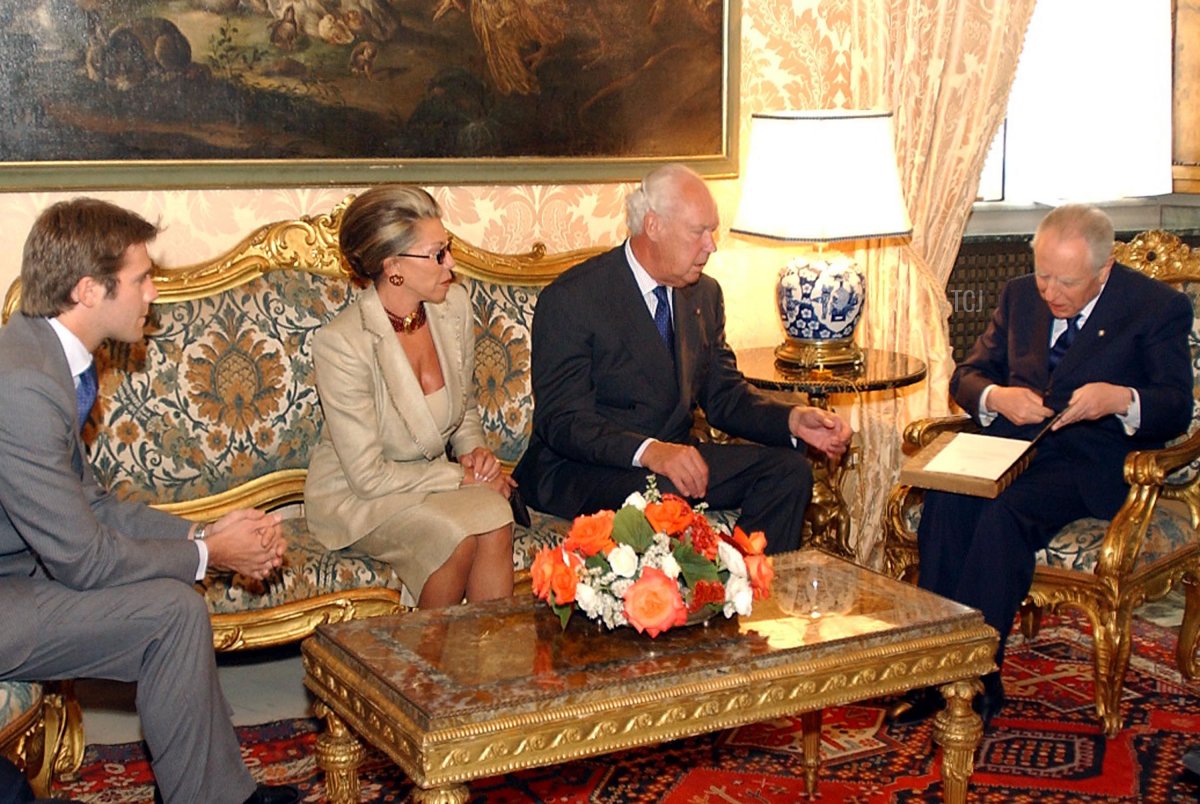
The exiled royals of the House of Savoy have since been permitted to return to Italy (pictured above in 2003), but the jewels remain locked firmly in the bank. Now, the descendants of King Umberto II are fighting a new court battle to try to reclaim the royal jewels. His four children—Princess Maria Pia, Prince Vittorio Emanuele, Princess Maria Gabriella, and Princess Maria Beatrice—are suing the Italian state to recover the jewels. The lawsuit comes after failed talks between the Savoy family and bank officials. The first hearing in the suit will take place in Rome on June 7.
Sergio Orlandi, the lawyer for the king’s children, told the Guardian, “We knew the mediation meeting [with the Bank of Italy] wouldn’t go anywhere but were obliged to have it before [suing the state]. I hope we manage to get the jewels returned, and it will now be up to a judge to establish if the family has the [ownership] rights.” The Guardian article also notes, “The jewels are said to have been the only part of the royal estate that were not confiscated by the Italian state after the monarchy was scrapped, an element that may help the Savoia family win back possession.” They’re also hoping that the note left behind in the bank—that cryptic missive from Umberto II that leaves the jewels to “those who have right”—will also help solidify their case. Stay tuned: let’s hope we finally get a resolution in this lengthy case soon.
Leave a Reply
You must be logged in to post a comment.